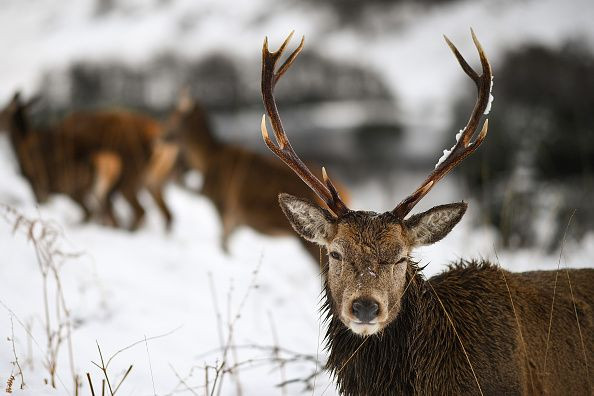CWD Is Spreading In Deer Herds In Upper Midwest Despite Best Efforts
Authorities in the Upper Midwest are working hard to stop the spread of Chronic Wasting Disease (CWD) throughout the deer, moose and elk populations.
While authorities are working to contain the disease by making it impossible to remove the carcasses of affected animals, helping hunters identify quickly if their kills are infected and incinerating animal carcasses, those steps might have come too late.
A report released by the University of Minnesota Veterinary Department says the deer population in the state of Minnesota has been widely affected by the neurological disease. The North Dakota fish and game department said in a report this week that CWD has made its way all the way to the western portion of the state in the Badlands. There are also indications the current outbreak has reached as far east as Wisconsin although the authorities there have not made an official statement yet.

Chronic wasting disease, otherwise known as the zombie deer virus, causes the deer to inexplicably become emaciated and lose control of all of their bodily functions. The disease is fatal for the affected animals, and it can easily be considered the rabies of the deer population - based on their reactions to the illness as their brain tissue is destroyed. The disease is reportedly present in animal populations in 24 U.S. states already, and in Canada.
Postmortem investigations of the animals harvested in these populations have revealed the tell-tale spongy brain tissue symptoms of chronic wasting disease. Minnesota has moved to find contractors that are willing to dispose of deer carcasses. In Crow Wing County, the local landfill is ready to take the deer carcasses, and they incinerate them immediately to try and curb the spread of the disease.
It is not known yet if the disease can spread to humans. But those out hunting have been warned to keep an eye on the deer that they take down and it hunters have been adviced not to consume the meat of deer that suffers from CWD.
Not enough is known about the disease yet, and researchers believe it is caused by prions, a type of proteins that cause the mad cow disease. Direct contact with the infected parts could lead to the tranmission of the prions. The prions are known to stay in the environment for years.
The U.S. Centers for Disease Control and Prevention says that there is "no strong evidence for the occurrence of CWD in people, and it is not known if people can get infected with CWD prions." But it also added that experiments have raised concern of risk to people from the disease and said it is important to prevent human exposure to CWD.
© Copyright IBTimes 2025. All rights reserved.






















